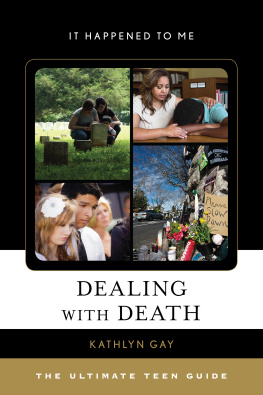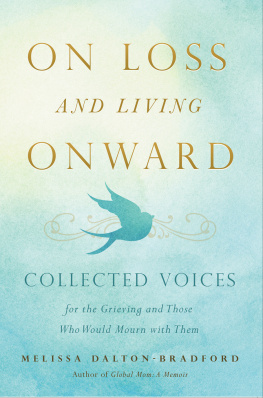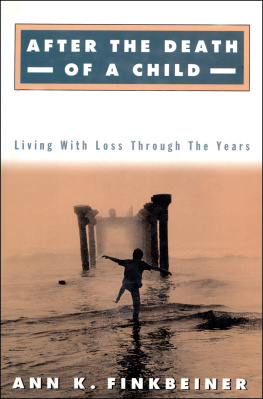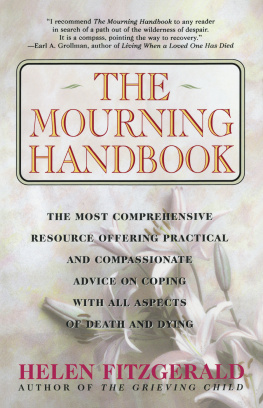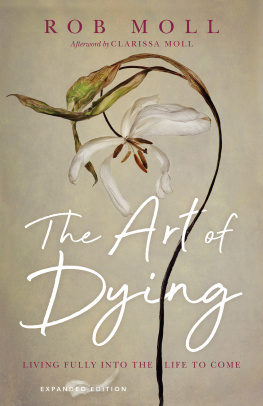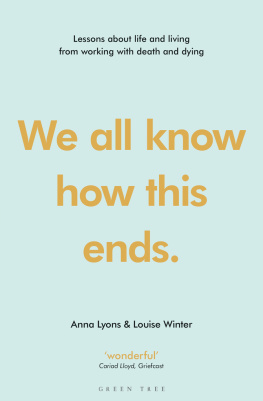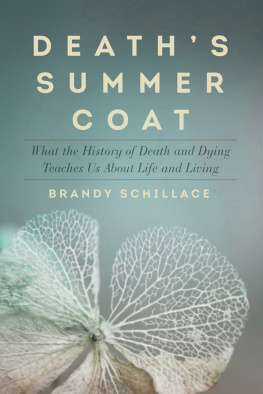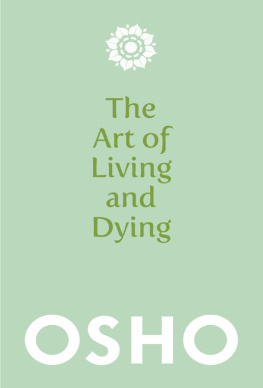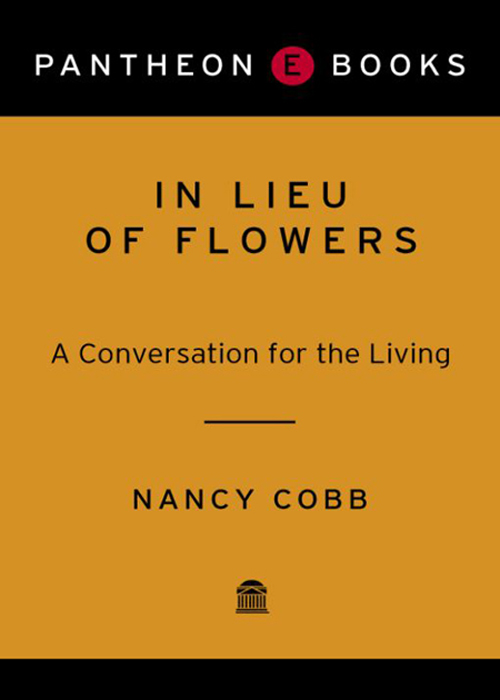
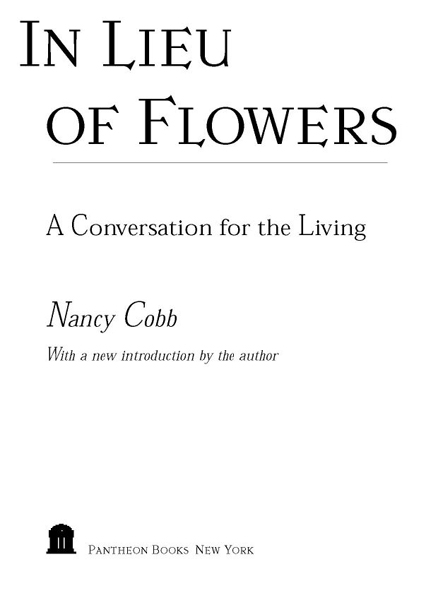
Table of Contents
For Leland Cobb Drummond,
with eternal love
By a departing light,
We see acuter, quite,
Than by a wick that stays.
Theres something in the flight
That clarifies the sight
And decks the rays.
EMILY DICKINSON
INTRODUCTION
Somewhere along the line, perhaps in an attempt to comprehend the incomprehensible, or to put a cap on the devastation that accompanies loss, the word closure attached itself to the shocking aftermath of death, particularly unexpected and catastrophic death. Closure has become a catchword, an attempt to explain or contain peoples search for meaning and their need to bear witness as they grieve, as they pray for a sign or a miracle: brothers and sisters, lovers and friends, mothers and fathers milling around horrendous wreckage somewhere on the planet, stunned, helpless, holding out the hope that the person they love is only missing. But if that person does not live, anyone who has ever grieved knows there will be no closure for these families, there will be only an opening, a void where someone was, and now isnt. The disbelief often gives way to obsession: the last words spoken over breakfast, a momentary expression of love or even irritation, the roast chicken that was served the night before, the talk of an upcoming soccer match, the rise of the nearly full moon on a clear September night. Finally, inevitably, the natural need to knowhow death happened, what it was like, when it occurredbreaks through all rational and irrational thought, looping around the mourner, who cannot help but envision the imagined images of the beloveds last moments: the foreknowledge, the terror, the suffering, and finally the hope beyond hope that death was swift and painless. The anguish for the living often begins with these internal pictures, and they are hard to shake. Telling the stories, voicing the worst, questioning any and all who will understand and listen, who may have stories of their own to tell, is where the faintest glimmer of healing begins. Grief is ongoing and individual. It can take weeks and months and years to fathom on a personal level, and even on a national level.
When a person dies, a relationship does not endit changes and continues, just as the living do. The bond, like the grief, is ongoing, ebbing and flowing with the passage of time, but enlivened in every memory cherished and in every story told. With each telling, the living not only connect with each other, they reconnect with the dead, and in so doing they honor the alliance. So when we use closure, I think what we really mean is connection. Closure suggests completion. Rather than closure, we long for continuity, for one last chance to tell the person how much he or she was loved and will be missed, or for the smallest remnanta watchband, a comb, a notebookfrom a life once lived. We are desperate to keep that bond alive. Our grief is the natural opening where the link between the living and the dead is forged, and once we are able to incorporate it into our hearts and souls, we understand that grief is an integral part of life. The celebration of the dead recalling memories, personality traits, and quirky anecdotes that need to be heard and repeatedis not only key to sanity and survival, it keeps alive the essence of dear friends who once thrived among us. Grieving is as natural as breathing, for if we have lived and loved, surely we will grieve. We must grieve, in our own separate ways, for as long as it takes, until that grief becomes a part of us, a grief that will end only with our own deaths, when the eternal cycle of mourning begins again.
Three years ago, my cousins son was murdered. Somewhere between having a beer, chatting with friends at a party, and heading back to his university dorm room, someone killed Scott, and then, as far as the police can tell, placed his lifeless body on the railroad tracks nearby, where, in spite of the conductors frantic attempts to sound the whistle and activate the brakes, the train hurtled over this young man lying in fetal position between the rails, and when it was over, there was nothing left but a piece of his finger. The crime has never been solved.
My cousins faith has been a solace, but she still cries every day, searching her memory for a sign in the last months of her sons life. She hopes he will come to her in a dream, as he has to her husband and her daughter. She wishes he could have known their new grandson, his first nephew. She welcomes every opportunity to talk about Scott, about his love for children and basketball, about his belief in God. Because of her own experience, she has learned to reach out to other parents who have lost children, even years after these children have died. She knows that the first days and weekswhen people come to visit, bake the pies, sweep the floorsare short lived. She knows of the isolation that sets in six months down the road and how most people think, Maybe we shouldnt bring it up anymore, maybe it will only make her sad. But, in fact, even though it is sad, it pleases her to remember their only son, to keep his kindness and his character out in the world by remembering the short life of a boy she will cherish forever.
On the morning of September 11, 2001, I thought of Scott, of how little was left of his strapping twenty-year-old body, of how little would be left of the thousands of bodies in an area of lower Manhattan that has come to be known as ground zero, an area that will one day, in deed and in name, be transformed by the many souls who abide there from a desecrated landscape into a hallowed ground.
Like my cousin, I too am always looking for signs, and most often I find them in nature. Recently, a woman I know died of a brain aneurysm as she and her twin sister crossed the bluff above Joshua Cove overlooking Long Island Sound. Her son had just been married there, and the twins were to begin building new houses and studios on the bluff the following month. Instead, days later, Judy, an abstract painter whose source of inspiration was the natural world, was memorialized in her lush garden by friends, family, and most particularly by her twin Betsy, who read passages from a letter Judy had written to her the previous summer. The letter was lyrical, recapturing scenes from their shared youthlimbs, once entangled in the womb, growing, going on to stir the mud, crush the berries, make the potions, collect the stonesand a final line was read by Betsy in a trembling voice: Oh sister, what a past we have to look forward to.
Later that afternoon, as I was folding laundry in my daughters room, I glanced out her window and saw a sticklike creature perched on the leaves of a geranium. I opened the sliding door, bent down, and peered more closely at this marvel of nature who peered right back at me: a praying mantis. I had seen only one before in my life, when I was about ten. Bulging eyes, head swiveling from side to side, a tiny ET, a minute being from a heavenly body. I watched it for a long time, then went back in and finished folding the laundry, carrying it up two flights of stairs to my bedroom. When I reached the top step I glanced out a small window that looks onto a lake. And there, on the screen, was another praying mantis. I knew it was another mantis because I ran down to check my geranium mantis, just to make sure. Good God, I thought, a sign. Two of them. Praying. A prayer for Judy, for Scott, for all the innocent victims, for all those who continue to love in spite of the hate. A prayer that we may not always live in despair and in fear, a prayer that we will move through a state of grief into a state of grace.
Next page

